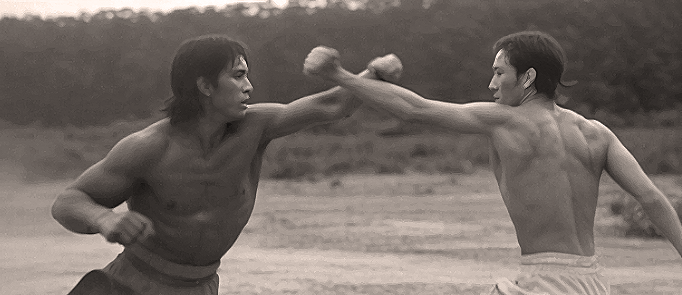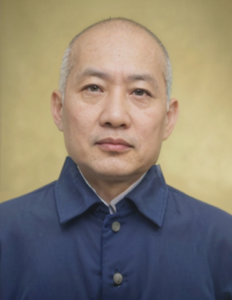Legendary Origins
According to some records, in the past, the Shaolin Temple martial arts were spread into 3 families and 4 styles. The 3 families being Hong, Kong and Yue. The Four styles were Dasheng Men, Luohan Men, Erlang Men and Weituo Men. The specific origin and history of “Erlang Quan” is difficult to verify. It is said that Erlang Quan was created in the late Ming and early Qing dynasties.

At the end of the Ming Dynasty, Wei Yiguang and Kong Yiming, disciples of the Shaolin Temple, left the temple one after another, each living in a separate places, hiding in the mountains and forests, listening to the chirping birds, comprehending the mysteries of Shaolin, visiting famous martial arts masters, and after many vicissitudes of life, both of them separately achieved outstanding martial arts skills.
During the famine in the Year of Locust, the two were on the way to visit relatives and happened to meet at an inn on their way back home. After chatting, discovered that they were brothers from the same Shaolin school. When they talked about martial arts, they became very intrigued. They got up to fight with each other. After more than a hundred rounds, they were evenly matched. They vowed to work together to teach students. They named the boxing “Erlang Boxing”. Another theory, is that Erlang Quan is so named because it is mainly practiced by two people. Passed down from generation to generation, the disciples spread across dozens of provinces such as Henan, Hebei, Shandong, and Shanxi. Lastly, is that it was inspired by Erlang Shen, a Daoist deity (with Zorastrian influence).
History and Development of Erlang Quan
Erlang Quan was taught among generations but usually to very few, and it was in the Ming Dynasty, that it matured into a specific martial arts system. The first clear generation or founder of Erlang Quan, becoming Ai Lianchi and was then passed to Huang Santai and Wang San (from Hejian) in the third generation. Wang was nicknamed “Flying Kicks Wang” and he taught Cui Li, who was a devout orphan buddhist from Yanshan, that had lost his parents when he was young and then became a devout buddhist. Cui Li had a cousin whom was married to M Wang. Due to his circumstances and grit in life, Wang liked Cui Li’s intelligence and integrity, took him on as disciple imparting the skills of Erlang Quan. Cui did not have any children, so he passed it on the Wang family, his disciple Wang Tianwei.

Wang Tianwei broke the rule of single transmission and developed schools teaching in more than 70 surrounding villages, with Shengfo Temple as the center. He did not accept gifts or compensation, and he recruited many disciples. Because of his profound skills and often fighting injustices for the local people, he was once hired as a security guard by Zhang Zhidong, a governor in the Qing Dynasty. Wang Tianwei’s son, Wang Jinggui, was invited to establish schools throughout 80 villages in Ningjin County, Shandong Province. That lead to another line of Shandong Erlang Quan.
Wang Jinggui’s son Wang Yushan completely inherited the Erlang boxing technique. He once stood up for workers who were oppressed by the Japanese army in the Northeast, and later went to Tangshan to teach martial arts. Jie Zhenguo and Cao Kunshu who fought in the sino-japanese war, were both his disciples. Wang Yushan’s son, Wang Chunming started learning martial arts at the age of 7 and had a solid foundation in martial arts. After the Sino-Japanese War, he formed a martial arts association and taught hundreds of people.
Empty hand methods
It should be noted that all empty hand routines are also a two-man dual practice equivalent, as it is the prevalent feature of Erlang Quan.
| 八趟弹腿 8 Roads of Tantui (Spring Kicks) 十八趟鸳鸯腿 18 Sequences of Mandarin duck kicks 二郎门 五行短拳 (金, 木, 水, 火, 土) 5 Sets of Short Boxing (5 Elements) 二郎门 八卦长拳 (乾,坎,艮,震,巽,离,坤,兑) 8 Sets of Long Boxing ( 8 Trigrams) 二郎门八趟陆春 8 sequences of Luchun |
Weapons of Erlang Quan:
| 开山刀 Open Mt Saber 开山棍 Open Mt Staff 盘龙棍 Coiling Dragon Staff 金锁刀 Golden Locking Saber 六合刀 Six Harmonies Saber 开山大斧 Open Mt Long handled axe | 五虎断门枪 Breaking Gate Spear 梨花枪 Pear Blossom Spear 昆吾剑 Kwun Wu Sword 钟馗剑 Zhongkui Sword 匕首 Daggers 虎头双钩 Double Hooks | 六角鸳鸯钺 Six angled Crescent Blades 双捶 Double Hammers 春秋大刀 Spring Autumn Blade 三尖两刃刀 Three Pointed Blade 方天画戟 Halberd |
